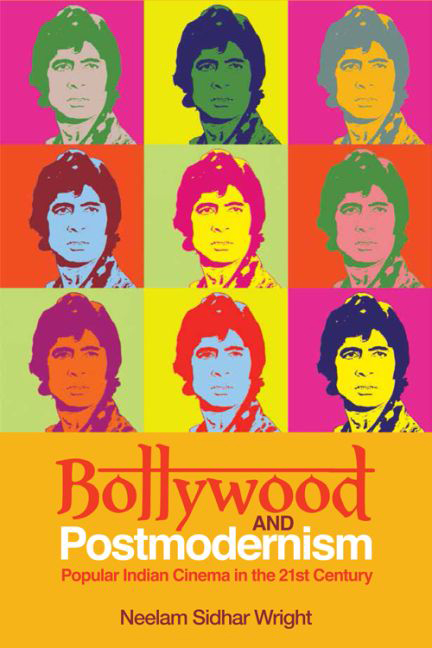Book contents
- Frontmatter
- Contents
- Acknowledgements
- List of Figures
- List of Abbreviations of Film Titles
- 1 Introduction: The Bollywood Eclipse
- 2 Anti-Bollywood: Traditional Modes of Studying Indian Cinema
- 3 Pedagogic Practices and Newer Approaches to Contemporary Bollywood Cinema
- 4 Postmodernism and India
- 5 Postmodern Bollywood
- 6 Indian Cinema: A History of Repetition
- 7 Contemporary Bollywood Remakes
- 8 Conclusion: A Bollywood Renaissance?
- Bibliography
- List of Additional Reading
- Appendix: Popular Indian Film Remakes
- Filmography
- Index
2 - Anti-Bollywood: Traditional Modes of Studying Indian Cinema
Published online by Cambridge University Press: 12 September 2017
- Frontmatter
- Contents
- Acknowledgements
- List of Figures
- List of Abbreviations of Film Titles
- 1 Introduction: The Bollywood Eclipse
- 2 Anti-Bollywood: Traditional Modes of Studying Indian Cinema
- 3 Pedagogic Practices and Newer Approaches to Contemporary Bollywood Cinema
- 4 Postmodernism and India
- 5 Postmodern Bollywood
- 6 Indian Cinema: A History of Repetition
- 7 Contemporary Bollywood Remakes
- 8 Conclusion: A Bollywood Renaissance?
- Bibliography
- List of Additional Reading
- Appendix: Popular Indian Film Remakes
- Filmography
- Index
Summary
POPULAR TRENDS: THE (HI)STORY OF INDIAN CINEMA
Compared to longer-established studies of other popular cinemas, such as Hollywood, Bollywood cinema still seems to be in the process of emerging as an area of academic research in the West, and its historical excavation can equally still be considered a relatively young practice. At this stage, the need for Indian film scholars to go back to the beginning of its historical emergence seems logical and essential, so that we may chronologically go about constructing Indian cinema's history and explain how it has evolved into its contemporary form. Mihir Bose's book Bollywood: A History (2007), for example, offers a detailed study of the development of cinema in India over 110 years, from its first introduction in Bombay in 1896 (courtesy of France's Lumiere brothers), all the way to rising film star producer Amir Khan's critically acclaimed commercial blockbuster Rang De Basanti (2006). Interestingly, despite such an extensive and complex history of filmmaking (and a comparatively short period of academic research), it seems that we have already reached a stage at which many writers, commentators and educators feel they can offer a con-densed version of this history, emphasising the Hindi film industry's most significant aesthetic and thematic shifts, which can be represented as shown in Figure 2.1 overleaf.
Such a history of the development of the Bombay film industry, though useful for its categorisation and emphasis on the dominant trends throughout the decades, clearly contains certain gaps. By focusing our attention on the so-called ‘milestones’ in the history of Indian cinema in such a way, we also come to see how entire decades (presumably considered less innovative and critically significant) appear to be pushed aside. But while they may leave holes in Indian cinema's history, these gaps do tell us a very interesting story about the trends and biases of Indian cinema scholarship. The decades that tend to be skimmed over in Indian cinema timelines are the ones that have produced less politically oriented and more populist films. For example, with only a few minor passing references to the rise of star comedian Mehmood, legendary screen hero Dev Anand or romance movies such as Guide, Jewel Thief, An Evening in Paris and Waqt, the 1960s decade of Bombay cinema has generally been seen as non-distinctive in itself, instead overlapping with the 1950s golden era of social satires.
- Type
- Chapter
- Information
- Bollywood and PostmodernismPopular Indian Cinema in the 21st Century, pp. 21 - 45Publisher: Edinburgh University PressPrint publication year: 2015



